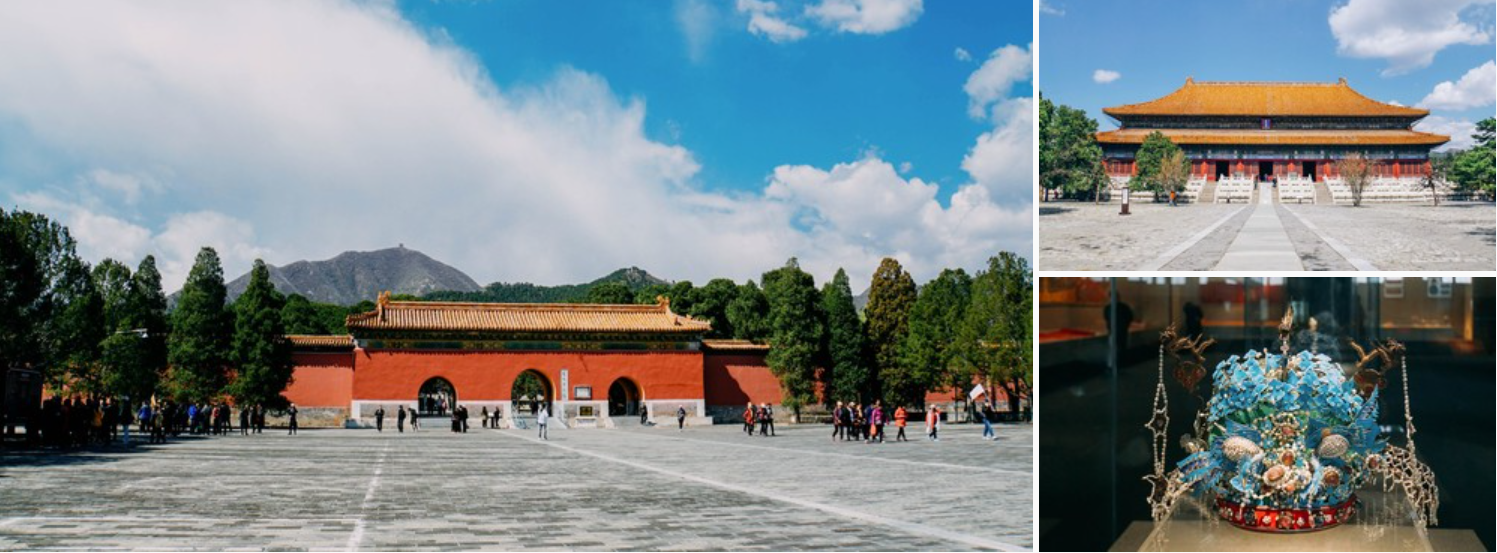Ming Tombs
Historical Background and Importance
The Ming Tombs is a complex of mausoleums of the Ming Dynasty emperors, located at the foot of Tianshou Mountain in Changping District, Beijing. Its construction began in the seventh year of Yongle (1409) and lasted for more than 200 years. It is an outstanding example of ancient Chinese imperial mausoleum architecture. Thirteen emperors of the Ming Dynasty were buried here. It is one of the World Heritage Sites, witnessing the rise and fall of the Ming Dynasty and carrying rich historical and cultural values.
Layout of the Mausoleum Area and Main Buildings
The entire mausoleum area is vast, with the Changling Mausoleum as the center, spreading to the left and right. Changling is the mausoleum of Emperor Chengzu (Zhu Di) of the Ming Dynasty. It is the largest and best - preserved mausoleum among the thirteen mausoleums. Its main buildings include the Ling'en Hall, which is one of the largest existing ancient wooden - structure buildings in China. The huge golden - nanmu columns inside the hall are astonishing, and the building is magnificent. There is also the Minglou, which is the landmark building of the mausoleum, with a solemn and elegant architectural style. Each of the other twelve mausoleums has its own characteristics, and the architectural layout is roughly similar, including the Sacred Way, Stele Pavilion, Mausoleum Gate, Ling'en Hall, Precious City and other buildings. There are stone statues on both sides of the Sacred Way. These stone statues are vivid, including stone animals and stone figures, symbolizing the majesty and guardianship of the emperor.

Cultural and Artistic Value
The architectural art of the Ming Tombs is remarkable. The mausoleum architecture combines various art forms such as ancient Chinese architecture, sculpture, and painting. In architecture, it reflects the symmetrical beauty and hierarchical system of traditional Chinese architecture. The strict hierarchical differences can be seen from the scale, form, and decoration of the buildings. The art of sculpture is vividly displayed on the stone statues and architectural decorations. The stone statues are exquisitely carved with different expressions. The wood carvings, brick carvings, and stone carvings on the buildings are beautifully decorated with a wide range of themes, including dragons and phoenixes, flowers, figures, etc., and have extremely high artistic value.
Tourist Experience and Attraction Recommendations
For tourists, visiting the Ming Tombs is an experience of traveling through history. You can start the visit from the Sacred Way, stroll along the Sacred Way, feel the solemn atmosphere of the ancient imperial mausoleums, and enjoy the spectacular stone statues on both sides. Changling is a must - visit attraction. Feel the grandeur of the ancient buildings in the Ling'en Hall and climb the Minglou to overlook the scenery of the entire mausoleum area. Dingling is also worth a visit. It is the mausoleum of Emperor Wanli (Zhu Yijun) of the Ming Dynasty. The underground palace has been excavated and opened to the public. Tourists can visit the coffins, funerary objects and other cultural relics inside the underground palace and understand the funeral culture of ancient emperors.
Protection and Inheritance
To protect this precious historical and cultural heritage, relevant departments have taken a series of measures. Regular repairs are carried out on the mausoleum buildings, and the protection of cultural relics and security precautions are strengthened. At the same time, through various cultural activities and exhibitions, the historical and cultural knowledge of the Ming Tombs is disseminated to the public, so that more people can understand and attach importance to this cultural treasure.
TAG:
